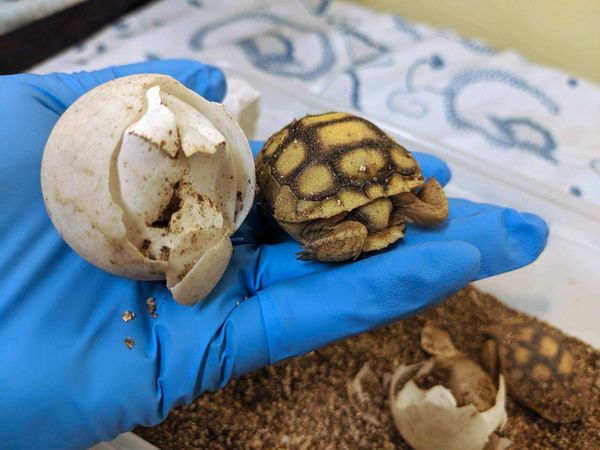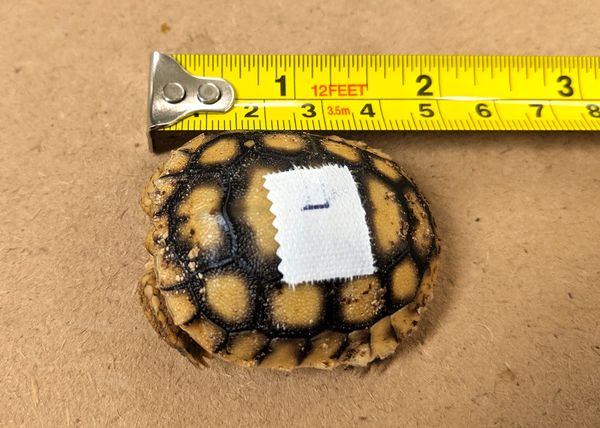

Thanks to our friends at the Island Reporter for this update!
The Clinic for the Rehabilitation of Wildlife announced that two gopher tortoise eggs incubating since early June successfully hatched in the early morning Wednesday.
On May 26, an adult female gopher tortoise was admitted to CROW’s wildlife hospital. The tortoise was found in the center lane of McGregor Boulevard in Fort Myers after it was presumably struck by a vehicle while crossing the road. Veterinarians took radiographs to help determine the extent of her injuries and discovered she was gravid, the term used for a pregnant tortoise carrying eggs. On June 6, she laid two eggs which rehabilitation staff immediately placed in an incubator. The tortoise later succumbed to her injuries.
The eggs were placed in vermiculite, a substrate used for incubating eggs because it retains moisture without over-saturating the eggs, then kept in an incubator that maintained a constant temperature. After 82 days, the eggs hatched yesterday morning, with both hatchlings healthy and doing well.
Each hatchling weighed in at just 22 grams, with one being 4.7 centimeters and the other measured 4.2 centimeters.
In the wild, gopher tortoises do not provide any parental care, so from the time they hatch, baby tortoises are on their own to find food and protection from predators. The two tortoises will remain at CROW’s wildlife hospital for a few days to ensure they are healthy and eating on their own before being released back to the area where their mother was rescued.
Did you know?
Baby gopher tortoises are called juveniles. Juveniles are less than 5 inches long and have a soft shell with a yellow/orange color. Their shells will get hard at about 7 years of age. Since adults do not look after the hatchlings, and since their shells are soft for so long, juveniles are quite
vulnerable to their environment and other species that live in it. They may use an existing burrow or even dig their own tiny one for shelter. Since they are losing their natural habitat, they are often found living in a variety of anthropogenic, or human oriented, environments. You may find them living in backyards, along roadsides, or in the playground and soccer fields at school. (As a matter of fact, Dina has a burrow in her front yard!)


